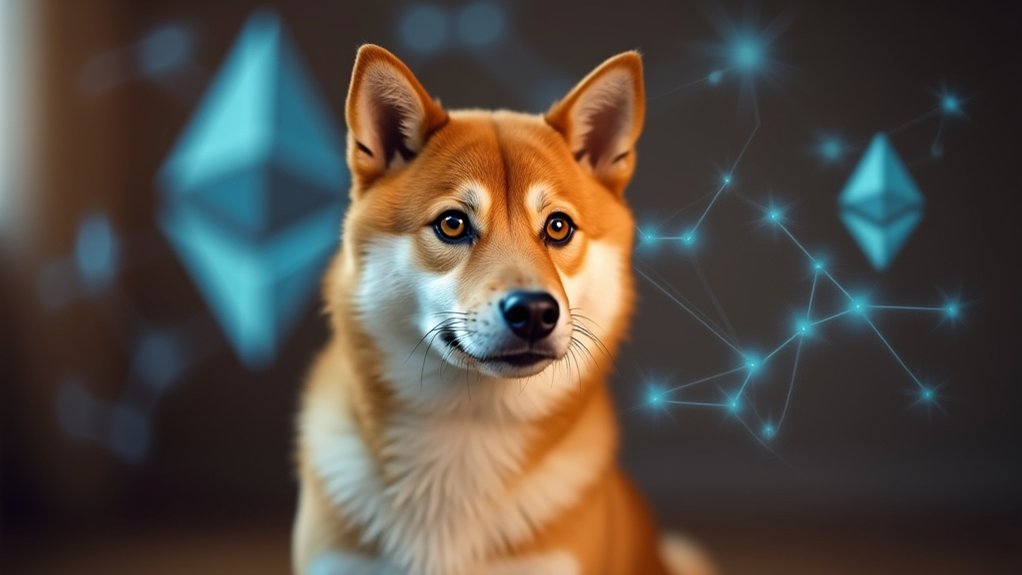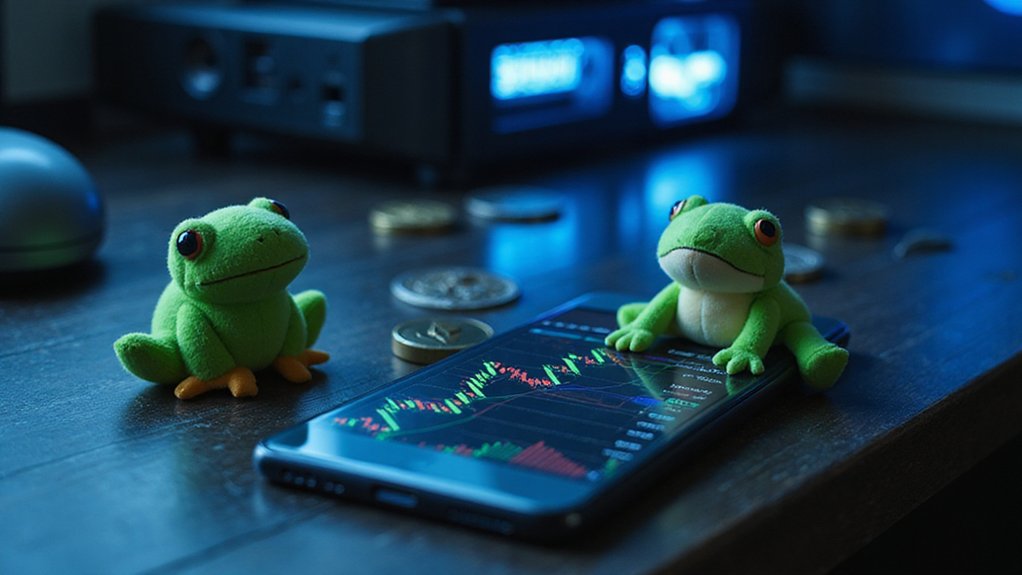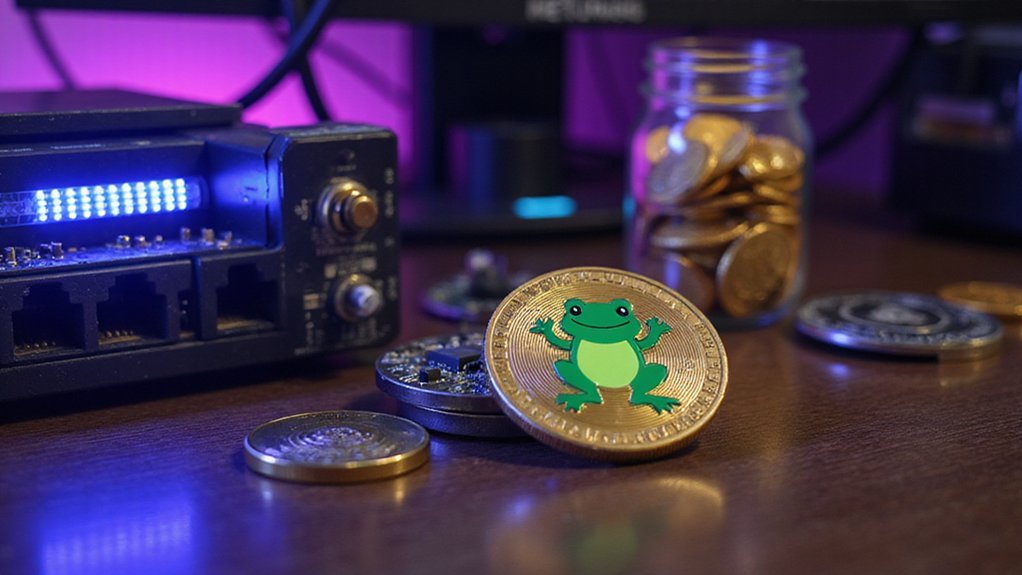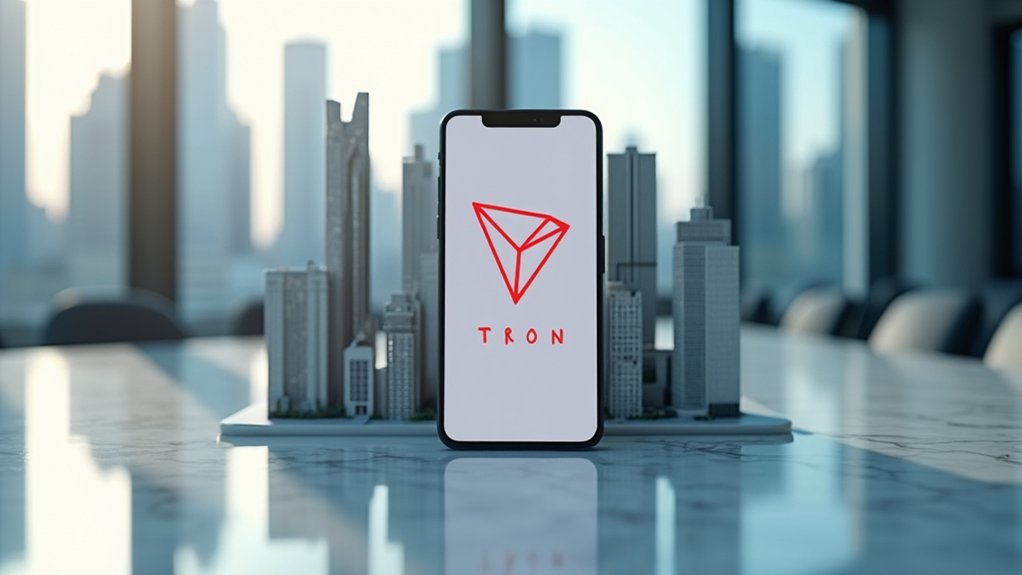Shiba Inu (SHIB) emerged in August 2020 as an ERC-20 token created by the anonymous developer Ryoshi, positioning itself as the self-proclaimed “Dogecoin killer” with a staggering initial supply of one quadrillion units. This meme-inspired cryptocurrency operates on Ethereum’s blockchain, powering an ecosystem that includes complementary tokens LEASH and BONE, the ShibaSwap decentralized exchange, and the Shibarium Layer-2 scaling solution. Despite experiencing dramatic price swings—including a 240% surge followed by steep declines—SHIB’s community-driven approach continues to challenge conventional monetary policy assumptions.

The cryptocurrency that dares to call itself the “Dogecoin killer” emerged from the peculiar intersection of internet memes and decentralized finance in August 2020, when an anonymous developer known only as “Ryoshi” launched Shiba Inu (SHIB) upon an unsuspecting market with the audacious goal of proving that community-driven tokens could spontaneously coalesce into something resembling economic significance.
Built atop Ethereum’s blockchain infrastructure, SHIB functions as an ERC-20 token with an initial supply of one quadrillion units—a number so astronomically large it makes national debt figures appear modest by comparison. This deliberate abundance mirrors Dogecoin’s approach, though whether mimicking inflationary tokenomics constitutes sound monetary policy remains a question best left to future economists studying the curious financial phenomena of the 2020s.
One quadrillion tokens transforms scarcity into abundance, leaving economists to ponder whether intentional inflation constitutes deliberate monetary strategy or mathematical absurdity.
The Shiba Inu ecosystem extends beyond its titular token through complementary assets like LEASH and BONE, which power ShibaSwap, the project’s decentralized exchange platform. Users can swap tokens, provide liquidity, and stake assets for rewards—standard DeFi functionality wrapped in dog-themed branding that somehow commanded billions in market capitalization at its peak. Recent platform improvements have enhanced liquidity pool management and streamlined user interactions, making the decentralized exchange more efficient for community participants.
Shibarium, the project’s Layer-2 scaling solution, addresses Ethereum’s notorious gas fee problem while enhancing transaction throughput. This technical infrastructure suggests ambitions beyond mere meme status, though whether utility can retroactively justify speculative fervor remains an open question.
Market dynamics reflect the volatile nature of community-driven assets, with SHIB experiencing a 240% surge in October 2021 followed by a precipitous 55% decline the subsequent month. Such price swings exemplify the FOMO-driven retail interest that characterizes meme coin trading, where social media sentiment often outweighs fundamental analysis. Currently trading at £0.000011 per token, SHIB remains positioned 83.98% below its all-time high of £0.000068, illustrating the dramatic volatility that defines meme coin markets.
Concentration risk persists through “whale” wallets holding substantial token quantities, while essential Buterin’s charitable donation of billions of SHIB tokens demonstrated both the project’s legitimacy and the founder’s diplomatic approach to unsolicited wealth transfers. Vitalik Buterin’s significant donations included over 50 trillion SHIB tokens worth more than $1 billion to the India COVID-Crypto Relief Fund on May 13, 2021, alongside an additional $665 million worth of tokens to the Future of Life Institute.
SHIB represents an experiment in spontaneous community building, where decentralized governance meets viral marketing in pursuit of practical utility. Whether this dog-themed digital asset evolves beyond speculative instrument into functional currency depends largely on continued ecosystem development and sustained community engagement—factors that remain as unpredictable as the cryptocurrency markets themselves.
Frequently Asked Questions
How Do I Buy Shiba Inu Cryptocurrency?
Acquiring SHIB requires using major cryptocurrency exchanges like Coinbase, Kraken, or Binance—platforms that have embraced this meme-inspired token with surprising enthusiasm.
One must create an account, complete identity verification (regulatory compliance being inescapable), link a payment method, and execute the purchase.
The process mirrors buying any legitimate cryptocurrency, which says something about the democratization of digital assets, regardless of their canine-themed origins or speculative nature.
What Wallets Support SHIB Storage?
Several wallet options accommodate SHIB storage, from hot wallets like MetaMask and Trust Wallet to hardware solutions such as Ledger.
MetaMask remains exceptionally popular for dApp interactions, while Trust Wallet offers mobile-focused convenience.
Coinbase Wallet provides device-based private key storage, and BitPay enables spending functionality.
Hardware wallets deliver superior security through offline storage, though software wallets suffice for most users seeking straightforward token management and DeFi access.
Can SHIB Reach $1 in Value?
SHIB reaching $1 remains mathematically improbable given its massive circulating supply.
Even after the Ethereum founder’s dramatic 410 trillion token burn, hundreds of trillions remain in circulation.
At $1 per token, SHIB’s market capitalization would dwarf Bitcoin and Ethereum combined—a rather ambitious proposition for a meme token.
Unless unprecedented supply destruction occurs (or market dynamics fundamentally shift), $1 SHIB exists primarily in wishful thinking rather than realistic financial projections.
What Are the Risks of Investing in SHIB?
SHIB investing carries substantial volatility risks, with prices swinging dramatically based on sentiment rather than fundamentals.
Concentration risk looms large—whale wallets controlling significant token supplies can trigger sudden sell-offs.
Regulatory uncertainty across jurisdictions adds another layer of complexity.
The speculative nature means investors face potential total loss, lacking the utility-based value propositions found in more established cryptocurrencies.
Diversification becomes essential when traversing such unpredictable waters.
How Does SHIB Compare to Dogecoin?
SHIB distinguishes itself from Dogecoin through Ethereum-based infrastructure, enabling DeFi integration and smart contract functionality that DOGE’s standalone blockchain cannot match.
While both embrace meme-coin abundance, SHIB’s ecosystem includes Shibaswap and Shibarium—actual utility beyond mere speculation.
DOGE relies primarily on celebrity endorsements and payment adoption, whereas SHIB attempts legitimate technological advancement.
The quadrillion token supply makes DOGE’s billions seem almost conservative, though both remain subject to community sentiment over fundamental value.









